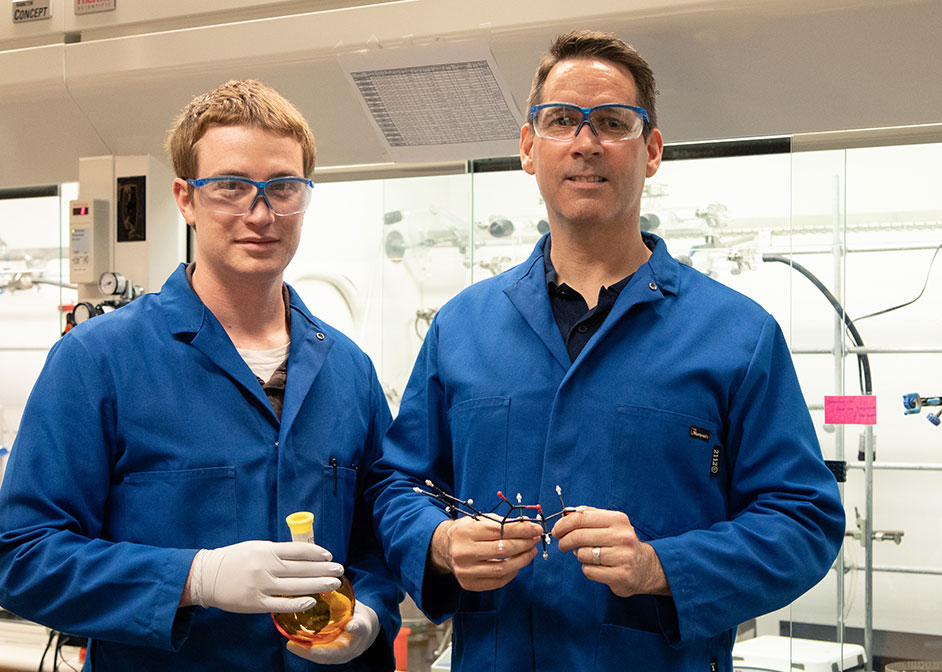New Synthesis Method for Three-Dimensional Molecular Structures
Drug development is a long process, one which takes years and millions of dollars.

The first step is often chemists isolating chemical compounds from natural sources, testing them for various properties, and then finding a way to synthesize the most promising ones in the lab.
In a recent paper, published in the Cell journal Chem, University of Houston researchers describe a new synthesis technique for producing a class of compounds known as chiral oxygen heterocycles. This technique opens up new possibilities for drug development.
Many Existing Drugs Derived from Natural Sources

“Historically, many of the existing drugs on the market came from natural sources,” said Don Coltart, an associate professor of chemistry in the College of Natural Sciences and Mathematics. Coltart was the principal investigator for this research, along with chemistry graduate student collaborators Ettore Rastelli (Ph.D., ‘17) and Andrew Bolinger.
An example would be salicylic acid, a component of willow bark, which is a remedy for headaches that dates back to ancient times. Chemists were able to isolate and synthesize salicylic acid, the main compound found in willow bark responsible for pain relief. Later, in 1899, its structure was modified by chemists at Bayer to become what we now know as aspirin.
Synthesizing Natural Compounds in the Lab
Although many promising compounds have been isolated from natural sources, companies need the ability to produce a compound in sufficient quantities for it to become a viable treatment.
Heterocycles are a class of compounds with a ring-like structure. Currently, a very large percentage of the top 200 prescribed drugs on the market are such compounds.
With heterocycles, the molecule’s shape is important. Some heterocycles are flat; others are more three-dimensional. The vast majority of heterocyclic drugs on the market are flat. Effective drug development often hinges on whether or not a molecule can fit in a specific enzyme, with the more specific fit often yielding more effective results.
Given their diversity of shapes, three-dimensional heterocycles remain an important, yet underdeveloped, avenue for potential drugs.
New Synthesis Method Opens Up Possibilities for Drug Development
“One aspect lacking in drug development is three-dimensionality of heterocyclic molecules,” Coltart said. “The argument is that we have not been exploring this functionality because we lack the ability to effectively make them in the lab.”
This new synthesis method opens up access to a new class of compounds. In this case, heterocycles with three-dimensional structures containing oxygen, which can be tested for their potential as drug candidates.
“This is just the tip of the iceberg,” Coltart said.
This research was funded by grants from the National Science Foundation and the Welch Foundation.
- Rachel Fairbank, College of Natural Sciences and Mathematics